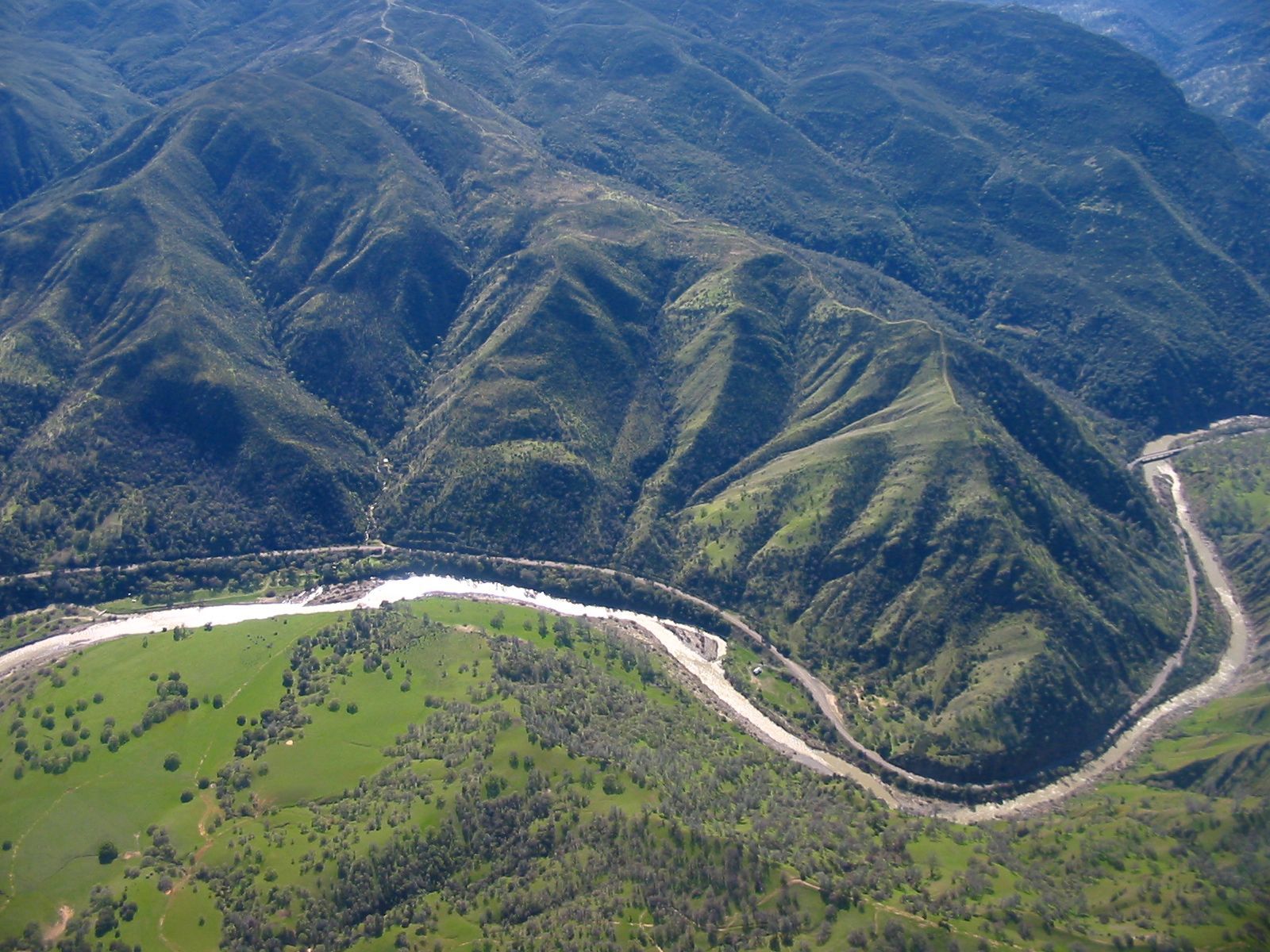Monumental Questions - Tell me More About Cache Creek

Cache Creek flows past Valley Vista Regional Park as it enters Capay Valley
Cache Creek begins at Clear Lake and is the only outlet for the Lake. The Cache Creek watershed flows east through Lake, Colusa and Yolo Counties and eventually into a settling basin near Woodland where the sediments are allowed to settle out and the water is then released into the Yolo Bypass and eventually into the Sacramento River through a series of flood control channels.
Upper Cache Creek courses through a canyon vegetated mainly with chaparral and is generally inaccessible. There are a few tributaries that flow into Cache Creek but the two major tributaries are the North Fork and Bear Creek. The North Fork begins north of Clear Lake on the slopes of Goat Mountain in the Mendocino National Forest, through the Indian Valley Reservoir and into Cache Creek below Highway 20. Bear Creek flows through the wildflower hotspot of Bear Valley and joins Cache Creek in Colusa County, then progresses through Yolo County’s splendid Capay Valley.
The name “Cache Creek” comes from the then Canadian-owned Hudson Bay Company, which began exploring Northern California via the Siskiyou Trail between 1820 and 1830. In 1828 they began trapping along the Sacramento River and caching their furs and pelts along the river’s tributaries, including Cache Creek – and the name stuck.
A landslide that resulted from the 1906 San Francisco earthquake temporarily blocked Cache Creek north of the town of Rumsey. The blockage caused the creek level to drop drastically and, in some places, it went completely dry. Eventually the creek broke through the mud and caused severe flooding in Rumsey. A rock ledge, called the Grigsby Riffle, approximately a mile and a half downstream from Clear Lake restricts water flow and increases the chances of flooding for communities around the lake. In 1914, a dam was constructed on the main fork of Cache Creek a few miles downstream of Clear Lake. The dam, cleverly named Cache Creek Dam, was built to increase the lake’s capacity and to regulate the outflow but the narrow, shallow creek channel does not allow the water to flow as fast as the dam can release it. This causes the water in Clear Lake to rise rapidly after prolonged rain events and to decrease very slowly. If flows were increased by altering the creek channel, communities downstream in Yolo County would be subject to flooding. This has been a long-standing squabble between counties resulting in court decisions and ongoing negotiations. The Capay Diversion Dam was constructed approximately 50 miles downstream from the Cache Creek Dam to distribute water throughout Yolo County using a network of canals and water control structures.
Beginning in the early 1800’s and for about the next 150 years, mercury (also called quicksilver) mining took place along Cache Creek and other waterways in California. Because there were no environmental regulations then, waste from mining activities made its way uncontrolled into Cache causing an increase in mercury in both the creek and eventually the Sacramento River. In 2004 the Environmental Protection Agency (EPA) stated that the mercury level was continuing to rise in Cache Creek and that the source was nearly forty old mines along the drainage. Several partners including the Bureau of Land Management (BLM), the Cache Creek Technical Advisory Committee, UC Davis, Tuleyome and others are working to monitor mercury levels and to organize and guide mine-remediation.
Although barriers exclude fall run chinook salmon and steelhead from migrating up Cache Creek, in years with very high flow conditions, some salmon may spawn in the lower regions of the creek. The portion of the creek above the Capay Dam provides one of the best native fisheries for pikeminnow, hitch California roach and Sacramento suckers on the west side of the Valley. Other species include large and smallmouth bass and catfish.
Tuleyome led the effort to have thirty-one miles of Cache Creek designated as a California Wild and Scenic River and the watershed includes the 27,245-acre Cache Creek Wilderness Area which is managed by the BLM. It is home to two herds of Tule Elk, Bald Eagles and many other species of plants and wildlife. Further downstream, the Cache Creek Conservancy has restored a 130-acre site known as the Cache Creek Nature Preserve. Cache Creek offers many recreational opportunities including whitewater rafting (spring and summer when water is released), kayaking, canoeing, tubing, hiking and camping and more.
-Kristie Ehrhardt; kehrhardt@tuleyome.org
Tuleyome Land Conservation Program Manager
RECENT ARTICLES






